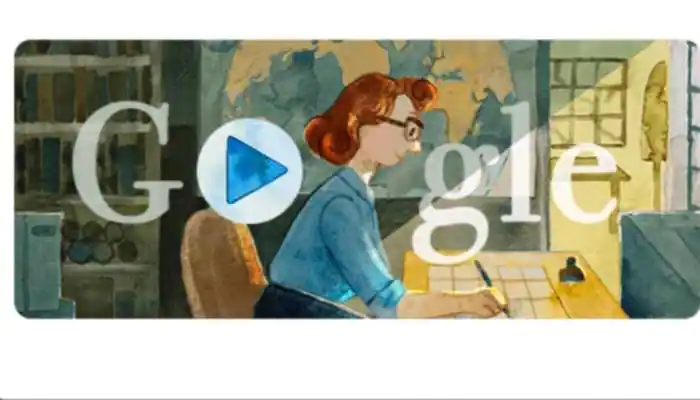Google Doodle celebrates life of American geologist Marie Tharp: On November 21 1998, the Library of Congress named her one of the greatest cartographers of the 20th century. Google on Monday celebrated the life of Marie Tharp, an American geologist and oceanographic cartographer who helped prove the theories of continental drift by launching a Google Doodle.
In the latest Google Doodle, the life of American geologist and oceanographic cartographer Marie Tharp, who helped prove the theories of continental drift, is being celebrated. On November 21 1998, the Library of Congress named her one of the greatest cartographers of the 20th century.
Marie Tharp was born on July 30, 1920, in Ypsilanti, Michigan. Tharp’s father worked for the US Department of Agriculture and gave her an early introduction to mapmaking, reminds the doodle. She attended the University of Michigan for her master’s degree in petroleum geology. In 1948, she moved to New York City and became the first woman to work at the Lamont Geological Observatory where she met geologist Bruce Heezen.
“Heezen gathered ocean-depth data in the Atlantic Ocean, which Tharp used to create maps of the mysterious ocean floor. New findings from echo sounders (sonars used to find water depth) helped her discover the Mid-Atlantic Ridge. She brought these findings to Heezen, who infamously dismissed this as “girl talk,” says Google on its page dedicated to Tharpe. “However, when they compared these V-shaped rifts with earthquake epicenter maps, Bruce Heezen could not ignore the facts.”
In 1957, Tharp and Heezen co-published the first map of the ocean floor in the North Atlantic. Two decades later, National Geographic published the first world map of the entire ocean floor penned by Tharp and Heezen, titled “The World Ocean Floor.”
In 1995, Tharp donated her entire map collection to the Library of Congress. In 2001, the Lamont Geological Observatory, where Tharp had started her career, awarded her with its first annual Lamont-Doherty Heritage Award.
